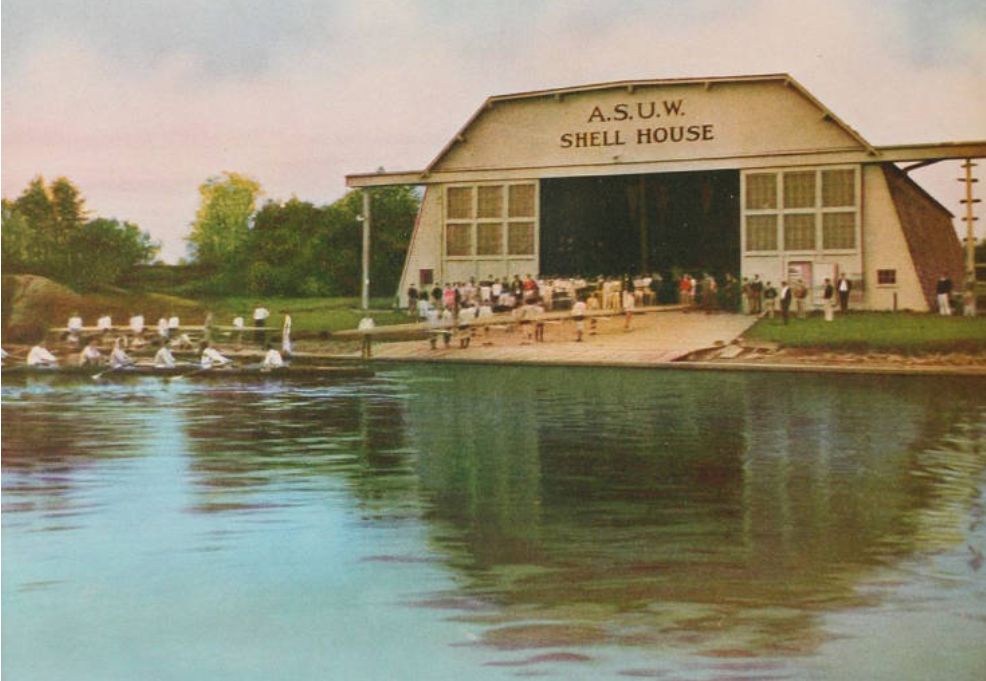UW 1936 Olympic Rowing Team
Other Resources
Daniel James Brown's The Boys in the Boat is published on June 4, 2013. (HistoryLink)
The 1936 Berlin Olympics and the Washington Huskies' Road to Rowing Glory (HistoryLink)
Archival Collections
Robert G. Moch collection, 1932 -2004
Varsity Boat Club photograph collection, 1906-1984
Varsity Boat Club records, 1898-1995
Alvin Edmund Ulbrickson papers, 1927-1956
Patricia Pocock Van Mason photograph collection, 1910s-1920
University of Washington Department of Intercollegiate Athletics records, 1897-2014
Stanley Richard Pocock photographs, circa 1921-1974
Frances M. Pocock collection, 1936-1972
William Scott Rowing Collection, 1907-1990
George Pocock University of Washington Crew trip to the 1948 Olympics home movie
Digital Collection Sources
On August 14, 1936, nine University of Washington rowers accomplished the unimaginable, capturing the gold medal in the Men’s Eight crew race at the Summer Olympics in Berlin, along with track and field athlete Jesse Owens, upending Adolph Hitler’s ambition for Germany’s domination at the games. As the band played The Star-Spangled Banner at the medal ceremony, the crowd of 75,000 raised their arms in the Nazi salute… except for the young Americans whose perseverance and grit brought them over the finish line first by a scant .4 seconds with a winning time of 6:25.4.
The working-class men had overcome adversity, illness, and long odds just to reach Berlin. The scrappy team’s win at the Poughkeepsie Regatta against America’s elite Ivy League teams clinched their Olympic berth. Rowing in the Husky Clipper, a wooden shell designed by acclaimed boat builder George Pocock, the team was coached to success by legendary coach Al Ulbrickson.
The story of the team – Donald B. “Don” Hume, Joseph H. “Joe” Rantz, George E. “Shorty” Hunt, James B. “Stub” McMillin, John G. ”Johnny” White, Gordon B. “Gordy” Adam, Charles W. “Chuck” Day, Herbert “Roger” Morris, and coxswain Robert G. “Bobby” Moch – had fallen out of public consciousness until the publication of Seattle-author Daniel James Brown’s book The Boys in the Boat in 2013. The book also brought renewed interest in the team’s practice facility, the ASUW Shell House, originally built by the U.S. Navy as an airplane hangar in the final days of World War I and now a Seattle and national landmark. A feature film of the same name has brought a new audience to the team’s achievements, which unfolded against the backdrop of the Great Depression when Americans needed heroes the most.



